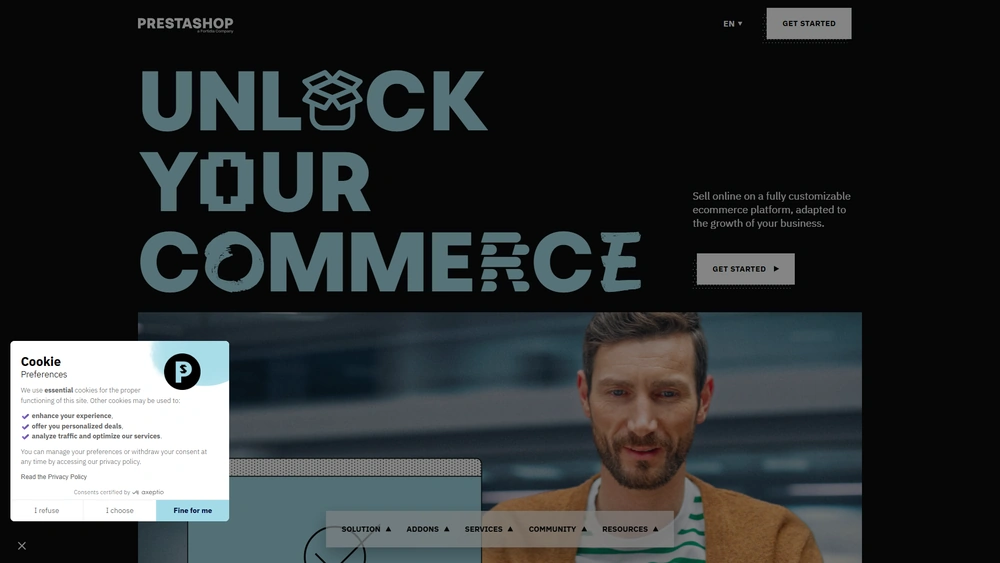PrestaShop Overview & 2025 Industry Position
PrestaShop is a leading open-source e-commerce platform known for its flexibility, community-driven support, and scalable architecture. As of 2025, it’s powering over 300,000 online stores worldwide, serving businesses ranging from niche boutiques to enterprise retailers. Positioned at the intersection of customization and cost-efficiency, PrestaShop remains a top contender for entrepreneurs and SMBs looking to break into digital commerce without massive upfront investment. In an industry where SaaS solutions often come with rigid limitations, PrestaShop stands out for its ownership-centric model and extensive theme and module marketplace.
From Launch to 2025: PrestaShop’s Journey
Founded in 2007 in Paris, PrestaShop emerged as an open-source solution aiming to give merchants full control over their e-commerce experience. By 2010, their platform had surpassed 50,000 installations. The launch of PrestaShop Addons Marketplace in 2011 opened new monetization channels for developers. In 2015, the company expanded into Latin America and Southern Europe, becoming a dominant player regionally.
2019 marked a pivotal version update centered on UI/UX improvement and back-office streamlining. A critical 2021 update focused on GDPR readiness and advanced SEO controls. In 2023, PrestaShop joined the MBE Worldwide Group, setting the stage for global operational scale.
2025 Strategy: PrestaShop is embracing hybrid commerce, simplifying B2B feature sets, and integrating plug-and-play AI tools to empower independent sellers with enterprise-grade capabilities in a decentralized economy.

PrestaShop Key Features
- Advanced Catalog Management – Easily segment products by categories, attributes, manufacturers, or suppliers.
- Customizable Themes – Thousands of free and premium themes from the Addons Marketplace.
- Powerful SEO Tools – Built-in customizable URLs, page titles, and meta tags for ongoing search performance.
- Mobile-Optimized – Responsive storefronts and mobile-first admin interfaces.
- Multi-language & Multi-store – Run international shops with several currencies and languages.
- Integrated Checkout & Payments – Support for popular gateways like PayPal, Stripe, and native PrestaShop Checkout.
Workflow & UX
PrestaShop emphasizes simplicity paired with control. From account creation to catalog uploads, workflows are guided with tooltips, consistent UI labels, and logical processes. The dashboard features contextual help for newer users, while developers can dig deep with template overrides and module hooks. Whether you’re configuring complex shipping rules or running discounts, every option is discoverable through a modern, streamlined interface with an improved left-rail navigation introduced in version 8.1.
PrestaShop Pricing Analysis & Value Metrics
| Offering | Pricing (July 2025) | Inclusions |
|---|---|---|
| Core Software | Free | Open-source, self-hosted version with full access to base features |
| PrestaShop Checkout | From 1.2% + fixed fee | Integrated payments gateway; no monthly fee |
| Hosting (via MBE) | $25–$90/month | Managed hosting plans with auto-updates, SSL certs, backups |
| Add-ons Marketplace | $0–$379/module | Modules, templates, and themes |
| Support (Premium) | $159+/month | Technical support bundle, training, migration assistance |
PrestaShop delivers exceptional value if you have internal development resources or are working with an agency partner, enabling total ownership without recurring licensing fees.
Competitive Landscape
| Platform | Model | Best For | Notable Differences |
|---|---|---|---|
| PrestaShop | Open-source | Customizable SMBs | Full code access; community-powered |
| Shopify | SaaS | Simpler launches | Subscription-based, fewer backend controls |
| Magento Open Source | Open-source | Large catalogs | More complex dev stack |
| WooCommerce | WordPress plugin | Content-heavy stores | Requires WP-native setup |
Use Cases
PrestaShop performs especially well in the following scenarios:
- Retailers expanding from local shops to cross-border e-commerce.
- Startups needing full control over tech stack and SEO.
- B2B vendors building catalogs with complex pricing rules.
- Agencies creating custom e-commerce builds for clients.
PrestaShop Integrations
PrestaShop supports hundreds of integrations through its Addons Marketplace and API documentation. Key categories include:
- Payments: Stripe, PayPal, Skrill, Klarna, Mollie
- Shipping: DHL, UPS, FedEx, SendCloud
- CRM & ERP: Zoho, HubSpot, QuickBooks
- Marketing: Google Shopping, Mailchimp, Facebook Ads
Pros & Cons
- Pros:
- Totally free core software
- Full customization control
- Extensive theme/module marketplace
- Strong global community support
- Cons:
- Learning curve for non-technical users
- Hosting not included
- Reliance on paid add-ons for key features
- Limited out-of-box analytics
Pro Tip: Use PrestaShop’s demo store to explore custom workflows and test integrations before committing to installations.
Final Thoughts
For experienced merchants and developers aiming for total control over their e-commerce experience, PrestaShop offers unmatched flexibility in 2025. Though it requires technical resources to unlock its full potential, the ROI for mid-sized operations is significant—equivalent or better than most turnkey SaaS rivals. New AI extensions and upgraded support tiers add further value this year, closing key usability gaps. It’s a great fit for scaling retailers, international catalogs, and B2B implementations.
PrestaShop FAQ
Yes. The core software is open-source and free to download. Hosting, support, and add-ons may incur additional costs.
Yes, but some configurations and customizations may require technical skills or the help of a developer, especially for advanced features.
Small to medium-sized businesses, boutique shops, and B2B wholesalers commonly use PrestaShop for its flexibility and global commerce readiness.
PrestaShop offers more customization freedom as an open-source platform, while Shopify provides easier, managed turnkey hosting and support.
Yes. PrestaShop includes customizable URLs, metadata, open graph support, and mobile-friendly themes out of the box—ideal for SEO.
